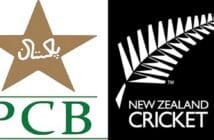As Scotland draw ever closer to their first major tournament in 23 years, the side played three games over the March international break.
They drew their first two matches with Austria and Israel, coming from behind in both those games to rescue a point, before concluding their international schedule with a 4-0 victory over the Faroe Islands at Hampden Park.
It leaves Scotland second in their World Cup Qualifying Group, four points behind Denmark who are top. It has been a reasonable month for Steve Clarke’s men, but here are a few things they can learn from these games.
Ché Adams
Whilst, Lyndon Dykes’ contribution for Scotland was fundamental for Scotland in their qualification for this summer’s European Championships, the nation have unearthed themselves a new animal in Adams. The Southampton star looked impressive in his three appearances for Scotland so far and will be overjoyed to get a goal against the Faroe Islands in the final game.
He offers a similar role tactically to Dykes positioned around hold up play but executes it in a more potent manner and is more trusted to be fed balls from Andy Robertson and Kieran Tierney considering his Premier League Proven status.
His fantastic debut goal for Scotland highlights his skill as Tierney fires a ball into his feet which he just beautifully caresses into space for himself and fires home. His goal scoring ability differs to the previous suitors for the role seen in Dykes, McBurnie and Shankland, as he can feature in moments of brilliance as well as grafting to take part in the hard moments often seen in the lull of a Steve Clarke innings.
The securing of Adams into the Scotland national team is a blessing for the fans who seem to hold him high in both expectation and above those who tried out the position before him. They can hold trust in the side’s attacking department now that they have a striker who can play as a solo striker in a side that only seems to have room for one.
Kieran Tierney and Andy Robertson
A bonus from this international break for Scotland can be the proof that arguably their two best players, Kieran Tierney and Andy Robertson can play in the same side and whilst debate rages over social media over who is the better full back, most Scotland fans will just be content with the above fact.
Kieran Tierney’s performance against the Faroe Islands in which he provided three assists was another showing on an ever improving flexible left back. During Mikel Arteta’s first campaign at Arsenal he adopted Tierney into a three at the back acting as a left centre half, with the talented Bukayo Saka often deployed in front of him, and Steve Clarke has utilised the same system recently.
Whilst captain Robertson’s performances have been lukewarm for club and country recently, his class remains permanent as one of, if not, the best full backs in the world. He will be a key figurehead in Scotland’s Euros campaign and features frequently for the Scots on almost every occasion.
It was an important issue for Clarke to try and solidify the team by using both of these players, however runs in the side and right back did not work for Tierney and it was beginning to seem as if there would not be place for both full backs in the side. However, the use of five at the back is a blessing for the team as both players can get up the flanks and as demonstrated in the opener against the Faroe Islands, Tierney can utilise this to damaging effect.
The ‘McTrio’
The cliched name of ‘McTrio’ is compiled of John McGinn, Callum McGregor and Scott McTominay. These three players are crucial to the Scotland side in both directions of the pitch. The makeshift three centre backs Scotland use holds two centre backs who both do not play in that position for their respective clubs in Tierney and McTominay.
Scott McTominay’s performances for Manchester United have blossomed this season as he has cemented his place in Ole Gunnar Solksjaer’s side often in place of midfielders such as Paul Pogba, Fred, Nemanja Matic and troubled summer addition, Donny Van De Beek.
Whilst, his defending under Steve Clarke has not looked the most sure at times, he has offered resillence at the back and can carry the team forward in his passing and dribbling. He is a key player in the side and looks a sure starter for the Euros.
Callum McGregor’s inclusion in the starting eleven will be under debate this summer despite good performances this international break. This is due to Celtic’s average season in comparison to Ranger’s fantastic maiden title win since their administration and solid performances from Ryan Jack in midfield under Steven Gerrard.
McGregor is a calming presence in the Scottish midfield who, much like Jack when he features, goes unnoticed with focus on talent around him in the midfielder. McGregor’s performances during the break will have helped him push toward a place for the opener against the Czech Republic, Scotland’s next competitive fixture, but he will look to up his form in the league to pip off a similar style of defensive midfielder in that of Ryan Jack.
John McGinn’s fantastic goal scoring record for Scotland continued in the break with three goals in his three games and a glorious bicycle kick against Austria to level the first game. His performances in a Scotland shirt continue to exceed expectation despite his form for Aston Villa not being consistent. He acts as a figurehead for the Scotland side and his ability to snatch a goal when you least expect it is crucial for Steve Clarke, who will only hope it can continue into the Euros.
Follow us on Twitter @ProstInt
![Prost International [PINT]](https://prostinternational.com/wp-content/uploads/2021/08/PINTtFontLogoRoboto1536x78.jpg)


